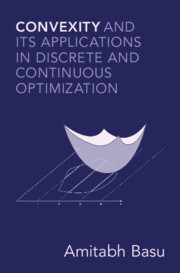5 - Ingredients of Mathematical Optimization
from Part II - Optimization
Published online by Cambridge University Press: 14 January 2025
Summary
A careful exposition of the conceptual underpinnings of algorithmic or computational optimization is presented. Computation in continuous optimization has its origins in the traditions of scientific computing and numerical analysis, whereas discrete optimization broadly views computation via the Turing machine model. The different views lead to some friction. In the continuous world, one often designs algorithms assuming one can perform exact operations with real numbers (consider, for example, Newton’s method), which is impossible in the Turing machine model. In the discrete world, the “input" to a Turing machine becomes a tricky question when dealing with general nonlinear functions and sets. The question of “complexity" of an optimization algorithm is also treated in somewhat different ways in the two communities. This chapter, combined with the careful discussion of computation models in Chapter 1, shows how all these issues can be handled in a unified, coherent way making no distinction whatsoever between "continuous" and "discrete" optimization.
Information
- Type
- Chapter
- Information
- Publisher: Cambridge University PressPrint publication year: 2025
